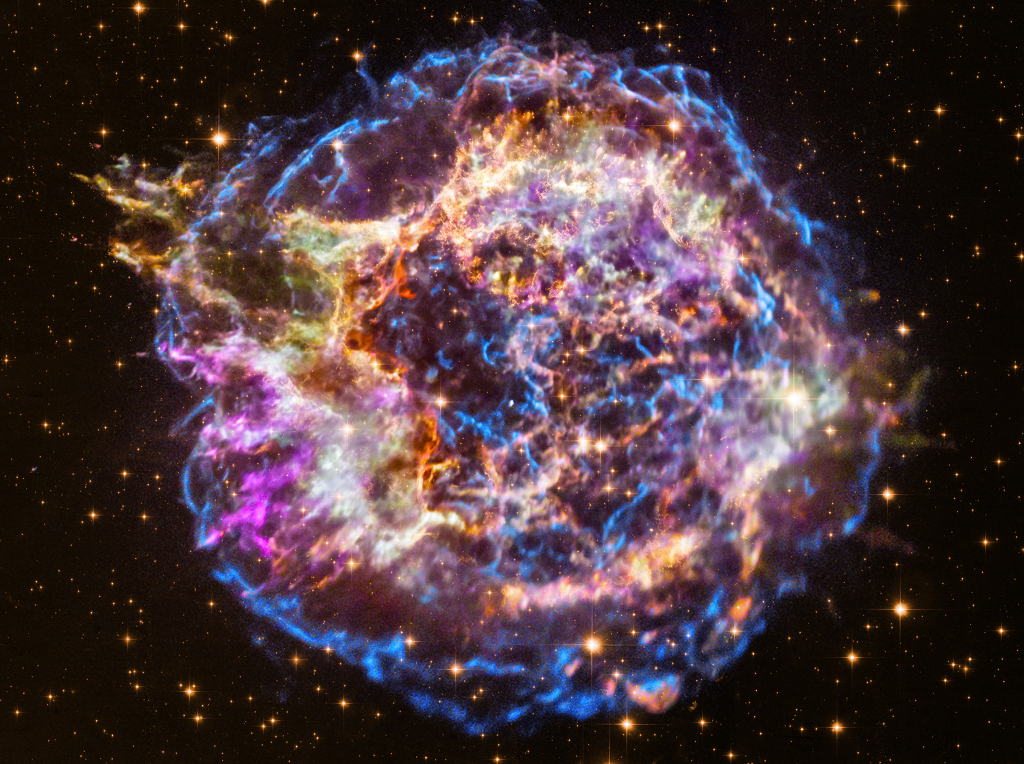안녕하세요, 잡학다식 입니다. 오늘은 과연 나사에서 어떤 방식으로 우주의 형상을 표현해 줄까요?
우선 이미지부터 볼 수 있도록 하겠습니다

해당 사진의 이름은 Recycling Cassiopeia A 인데요 우선 NASA에서 공식적으로 발표한 설명들을 확인해 보겠습니다
Massive stars in our Milky Way Galaxy live spectacular lives. Collapsing from vast cosmic clouds, their nuclear furnaces ignite and create heavy elements in their cores. After a few million years, the enriched material is blasted back into interstellar space where star formation can begin anew. The expanding debris cloud known as Cassiopeia A is an example of this final phase of the stellar life cycle. Light from the explosion which created this supernova remnant would have been first seen in planet Earth's sky about 350 years ago, although it took that light about 11,000 years to reach us. This false-color image, composed of X-ray and optical image data from the Chandra X-ray Observatory and Hubble Space Telescope, shows the still hot filaments and knots in the remnant. It spans about 30 light-years at the estimated distance of Cassiopeia A. High-energy X-ray emission from specific elements has been color coded, silicon in red, sulfur in yellow, calcium in green and iron in purple, to help astronomers explore the recycling of our galaxy's star stuff. Still expanding, the outer blast wave is seen in blue hues. The bright speck near the center is a neutron star, the incredibly dense, collapsed remains of the massive stellar core.
이번에도 광활한 우주 앞에 인간이 얼마나 작은 존재인지 다시 한번 알게 되는것 같습니다
저는 내일도 더 좋은 사진과 함께 돌아오겠습니다, 그럼 행목한 하루 되시길 바랍니다
'과학상식' 카테고리의 다른 글
| NASA 나사의 오늘의 이미지들 (2023-06-03) (0) | 2023.06.04 |
|---|---|
| NASA 나사의 오늘의 이미지들 (2023-06-02) (0) | 2023.06.03 |
| NASA 나사의 오늘의 이미지들 (2023-05-31) (0) | 2023.06.01 |
| NASA 나사의 오늘의 이미지들 (2023-05-30) (0) | 2023.05.31 |
| NASA 나사의 오늘의 이미지들 (2023-05-29) (0) | 2023.05.30 |